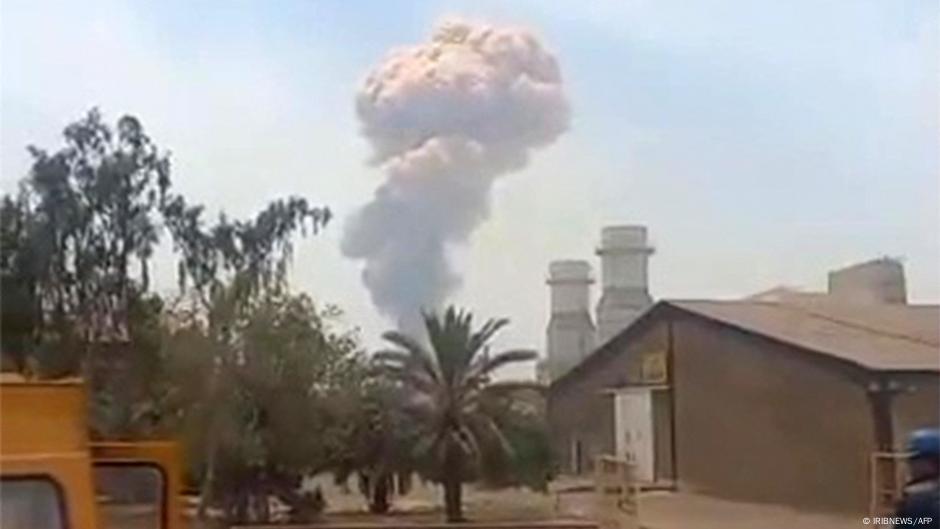Pakistan has claimed it may put the 1972 Simla Agreement "in abeyance" after India's move to put a hold on the Indus Waters Treaty following the barbaric attack on tourists in Jammu and Kashmir's Pahalgam in which 26 innocent civilians were killed.
Pakistan said it "Shall exercise the right to hold all bilateral agreements with India, including but not limited to the Simla Agreement in abeyance", questioning the validity of the Line of Control mutually agreed by the two governments after the 1971 war. The existing LoC is based on the ceasefire line established on December 17, 1971.
Advertisement - Scroll to continue
Context - What Happened After 1971?
Seven months after the 1971 war, the Prime Ministers of both countries met in Shimla to sign a peace treaty aimed at putting an "end to the conflict and confrontation". The Simla Agreement made provisions for the establishment of the Line of Control based on the ceasefire of December 17, 1971.
However, Pakistan tried to unilaterally alter the Line of Control at least twice after signing the Simla Agreement.
Siachen - A Battle Fought At 20,000 Feet
The origins of the conflict lie in the 1949 Karachi Agreement, a boundary that divided the militaries of India and Pakistan. After the first India-Pakistan war over Kashmir, which started in 1947, India and Pakistan Delegations authorized the establishment of a UN-brokered ceasefire line (CFL) in 1949.

A sketch map of Jammu and Kashmir from the book:
Source: The book 'Operations In Jammu & Kashmir 1947-1948', published on behalf of the Ministry of Defence
The CFL started from Manawar in Jammu and ran north to Keran in the Kupwara district, and then east to glaciers and then north to the glaciers. NJ 9842 was the last demarcated point on the CFL since the areas north of it were considered "inaccessible".
(Map Of CFL)
In the late 1970s, Colonel Narendra Kumar, also known as 'Bull Kumar', was the commander of the Army's High-Altitude Warfare School (HAWS). Two German mountaineers approached Colonel Kumar, requesting permission for an expedition to the Siachen glacier. The mountaineers brought maps which showed Siachen as part of Pakistani territory and the line from NJ 9842 running north-east to the Karakoram range instead of north to the glaciers as per the Karachi Agreement.
It was later learned that Pakistan was allowing expeditions to the glacier from its side. The Pakistani objective was to draw a new ceasefire line, not as per the agreement, without firing a single shot.
Siachen Glacier, which lies between the Saltoro Range to its west and the eastern Karakoram range to its east, is the source of the Nubra River, which joins the Shyok River, a major tributary of the Indus. India's claim was based on the universally accepted watershed principle of demarcating boundaries, where the ridge line of the Saltoro Range will be the LoC (now known as the Actual Ground Position Line - AGPL) as the watershed for the Dansam river to its west and Nubra to its east. However, Pakistan had a different understanding, claiming the extension of the LoC northeast to Karakoram, therefore occupying the Saltoro range, the Nubra river basin and the Siachen glacier.

Sia La, Bilafond La, Gyong La and Indira Col are present along the Saltoro Range
Photo Credit: Google Earth
Colonel Kumar then started expeditions to the Siachen glacier. On September 26, 1978, Flying Officer Man Mohan Bahadur (later Air Vice Marshal) of the 114 Helicopter Unit flew Colonel Kumar and his men to the glacier, which started a chain of events and several expeditions were carried out.
In August 1983, Pakistani troops protested against Indian patrols in the Siachen glacier. In a message, the Pakistani soldiers wrote, "Requesting instruct your troops to withdraw beyond LoC south of the line joining NJ 9842 and Karakoram pass. Any delay in vacating our territory will create a serious situation." A few days later, a similar warning was issued by Pakistan suggesting that Islamabad was planning something big in the region, i.e occupying Siachen. It was now a race against time.
Air Marshal Arjun Subramaniam, in his book 'Full Spectrum', writes "Pakistan displayed tactical nimblesness and dispatched a small force with machine guns and mortars in the winter of 1983 to occupy Bilafond La (La means to Pass) or Sia La, two of the highest passes in the northern sector of the glacier...They had to turn back due to inclement weather...had they succeeded, Pakistan might have succeeded in occupying the Saltoro Range."
India wargamed how to prevent Pakistani occupation of the glacier without any localised escalation. It was decided that control of Sia La and Bilafond La was crucial for the defence of Siachen, and Prime Minister Indira Gandhi gave a go-ahead to the plan in early 1984 and thus began Operation Meghdoot.
4 Kumaon and the Karakoram Wing of Ladakh Scouts were chosen for a mission to take control of Gyong La, Bilafond La, Sia La and Indira Col. Brigadier Vijay Channa, the brigade commander of 26 sector, decided that Indian troops would take control of these passes in April instead of the summer months in June. April 13, the day of Baisakhi, was chosen as D-day for the operation.
The first troops set foot on April 13, hoisting the tricolour. Within the next few days, the Saltoro Range was taken over by India, but Pakistan refused to stay silent. On June 23, 1984, the first shots were fired by Pakistan toward Bilafond La, in which Lance Naik Chanchal Singh, who was manning a 'Listening Post', was shot in the head. Captain Kulkarni and his men retaliated and repelled the Pakistani attack.
Over several days and weeks, multiple Pakistani attacks took place to take control of the Saltoro range, and each attack was repelled. Three years later, in 1987, the Quaid Post on the Pakistani side of the glacier region began firing on the Sonam post, located at a lower elevation along a narrow ridgeline, cutting off the supply of essentials to Indian troops.
India decided to take over the post, and 2/Lt Rajiv Pandey of 8 JAK Li led a patrol to take over the post. The Pakistani troops fired on Indian soldiers, killing 2/Lt Rajiv and nine other men.
Operation Rajiv was launched to avenge the death of 10 soldiers and to take control of the Quaid post located at over 21,000 feet. Naib Subedar Bana Singh led a patrol and successfully fought with the enemy and took control of the position. The post was later renamed Bana Post, and he was awarded the Param Vir Chakra.

Naib Subedar Bana Singh of 8 JAK LI was awarded the Param Vir Chakra.
Photo Credit: X.com/@banasinghpvc
Operation Meghdoot is the longest-running active military operation in the world.
Kargil - Pakistan's Second Misadventure
Siachen laid the foundation of the Kargil conflict. The plan, made on flimsy grounds, had a taste of revenge mixed, stemming from the Siachen conflict. In 1999, General Pervez Musharraf wanted to avenge his defeat as a Brigade commander following several failed attempts to capture Siachen glacier.
Nasim Zehra, a Pakistani journalist and author of 'From Kargil to Coup: Events That Shook Pakistan', writes that the plan to take control of NH-1 was presented to General Zia Ul-Haq, who rejected it because of Pakistan's involvement in the Soviet-Afghan war and later to Prime Minister Benazir Bhutto.
Operation Koh-e-Paima (KOP), as it was called, was planned by the 'gang of four' comprising: General Musharraf, Lt Gen Aziz, the Chief of General Staff, Lt Gen Mehmud, the 10 Corps Commander, Rawalpindi and Major General Javed Hassan, Force Commander Northern Areas (FCNA).
The objective was to take over mountain peaks overlooking NH-1 from Mushkoh valley near Zoji La to Turtok in the far east, which lay west of the foothills of the Saltoro Range, covering a total area of over 100 km.

In 1999, the first intrusions into Indian territory were detected on May 3 in Batalik, followed by multiple sightings in different sectors by the second week of May. It was clear that it was a large-scale intrusion and not a localised incursion.
Read more: Revisiting Kargil At 25: Air Power That Turned The Tide At 18,000 Feet
Pakistan's objectives, as stated by India's Kargil Review Committee, were to cut off supply lines between Kashmir and Ladakh, isolating troops in the Siachen glacier. Alter the Line of Control, forcing the Indian and Pakistani governments to negotiate with a threat of nuclear escalation and further internationalise the issue of Jammu and Kashmir, achieving a better trade-off against positions held by India in Siachen and creating a security vacuum in the Kashmir valley by pulling troops toward Kargil.
General Musarraf even told Pakistan Prime Minister Nawaz Sharif, while briefing him about the Army's operation in May 1999, "Sir, based on the wisdom and experience of my entire professional career, I could guarantee the success of the operation."
India responded with full force. The Army and the Air Force jointly operated to reclaim all of the occupied territory, though 527 Indian soldiers and officers were killed in action in one of the toughest high-altitude battles fought at heights over 15,000 feet in military history.

 5 hours ago
6
5 hours ago
6









